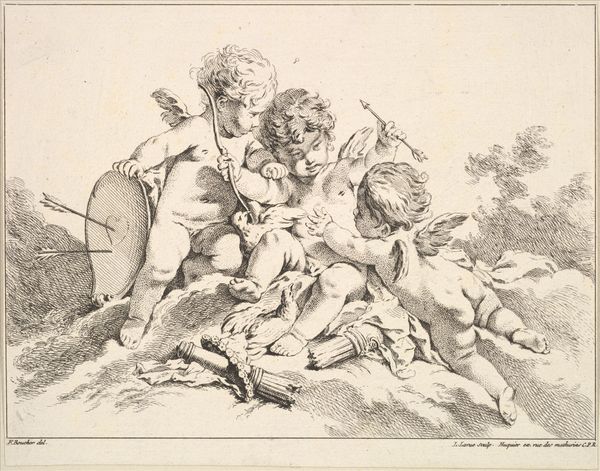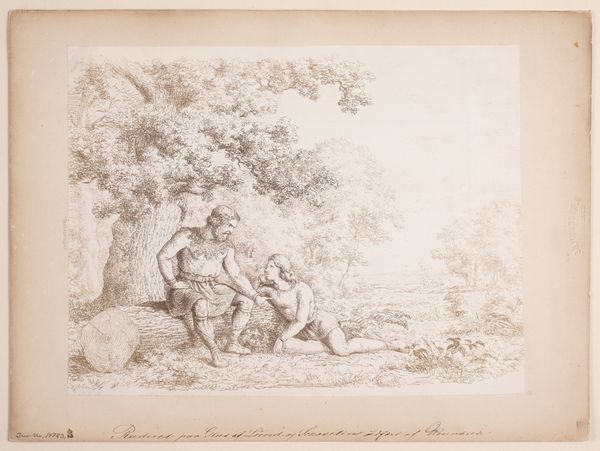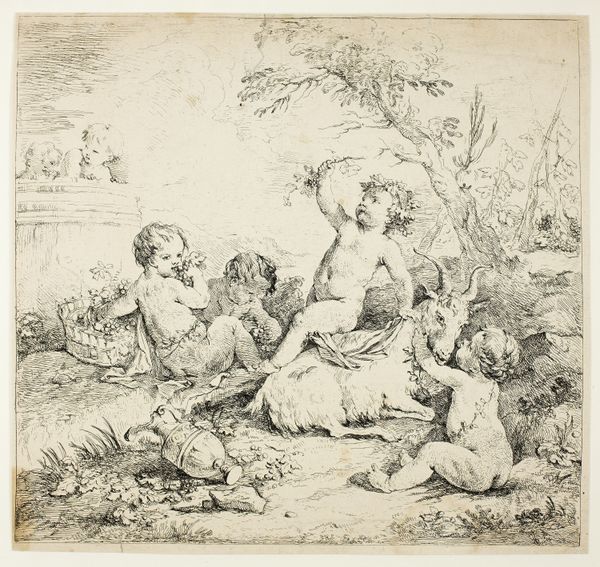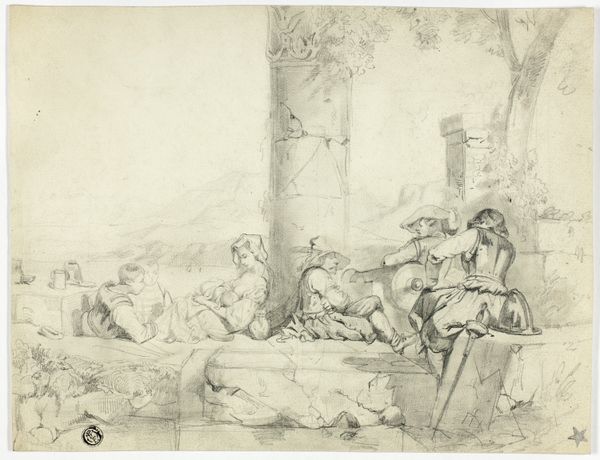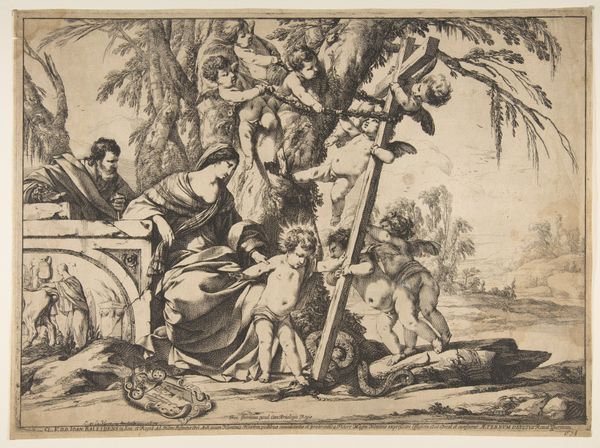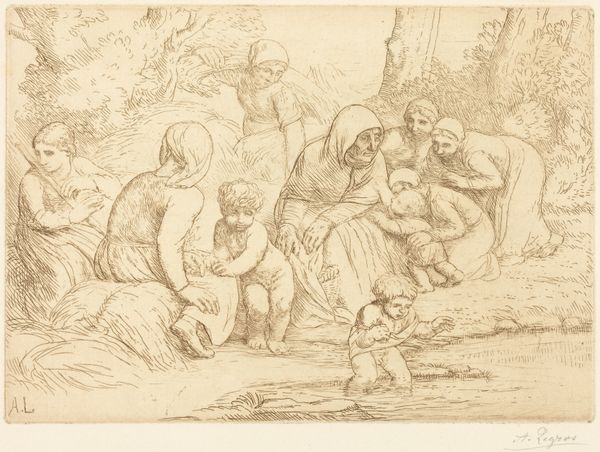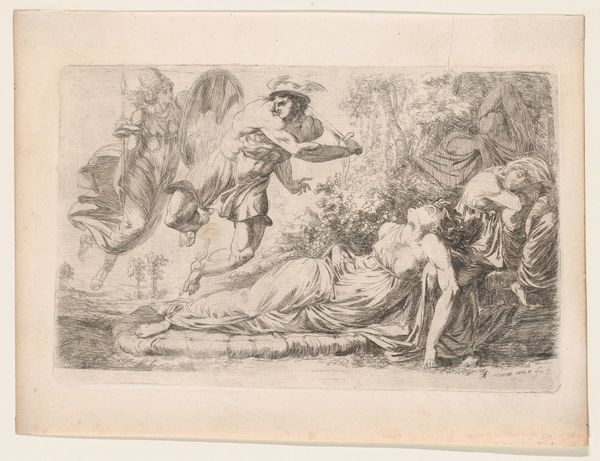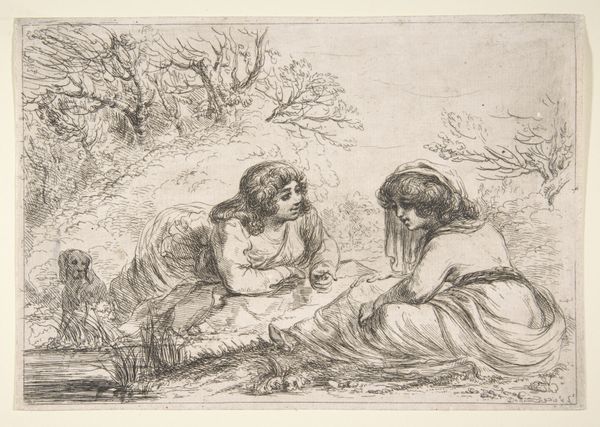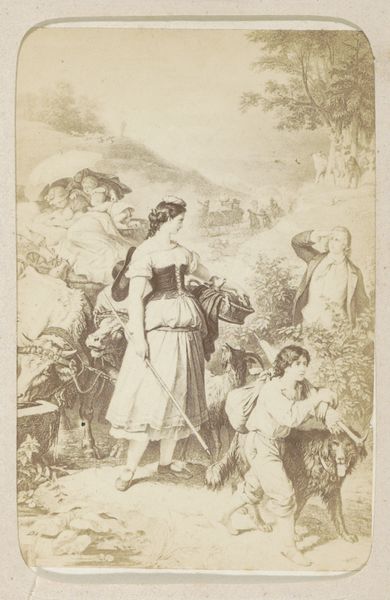
Dimensions: 368 × 419 mm
Copyright: Public Domain
Curator: "Fishermen," a pen, ink, and etching drawing on paper completed in 1774 by John Hamilton Mortimer, presents quite the scene. What strikes you first? Editor: There's an almost melancholic quality despite the activity depicted. It’s as if a serene gloom settles upon this everyday toil, a quiet dignity mixed with hardship. Curator: I agree; there is a tension. Let’s consider the structure of this baroque landscape: Mortimer uses line masterfully to direct our eyes. Note the converging lines of the fishing net which form a subtle pyramid leading up toward the figure standing near the tree. Editor: Absolutely. The placement of the figures and their relative clarity are fascinating. The standing figure, perhaps representing the female ideal or privilege, almost looms ethereally over the ruggedness of the men at work, highlighting class disparity and the physical burdens of labor in the late 18th century. Curator: Precisely. Mortimer plays with light and shadow to model form, creating volume that grounds the figures while simultaneously letting areas fade into suggestion rather than concrete depiction, especially the background architecture. The effect invites speculation about locale. Editor: One cannot ignore that their placement close to the city evokes questions of consumption. Are the fish being caught to feed the urban population or perhaps for personal gain? It reflects society's reliance on natural resources, as well as who benefits the most from them. This etching seems quietly revolutionary, revealing tensions of a pre-industrial world. Curator: Indeed. The artist uses narrative art here to raise socioeconomic questions. Mortimer's focus on this sort of genre painting showcases skill in portraying scenes with a touch of grand history—and certainly moral ambiguity. Editor: Looking at "Fishermen" reminds us that even seemingly simple images can contain multitudes when viewed through diverse theoretical lenses, urging consideration of historical contexts of labor, class, and the complex relationship between humanity and nature. Curator: And as we examined formal elements of line, composition, and shadow, we see those very elements bolster interpretations—further proof that an image can resonate across numerous perspectives.
Comments
No comments
Be the first to comment and join the conversation on the ultimate creative platform.
